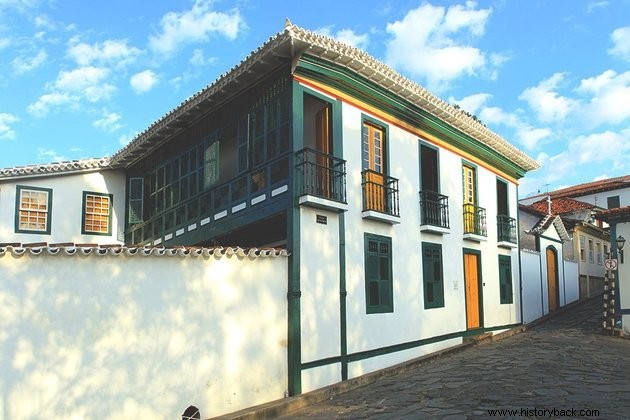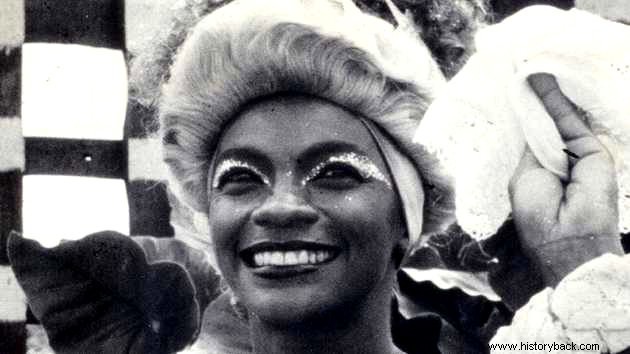Chica da Silva , born Francisca da Silva, was a freed slave who lived in Arraial do Tijuco, in Minas Gerais.
The myth of Chica da Silva grew from the 1950s onwards with the recovery of towns in Minas Gerais. Since then, her life has yielded movies, songs and soap operas.
Biography
Chica da Silva was born from the union of a slave and a Portuguese, a situation not uncommon in those times. As her father did not free them, Chica da Silva was sold as a slave to a doctor with whom she would end up having a child.
With the arrival of the diamond contractor João Fernandes de Oliveira, to Arraial do Tijuco (currently Diamantina/MG), he buys Chica da Silva as his slave. However, she was more than that, because they both fell in love and had thirteen children.

Chica da Silva was manumitted by João Fernandes and lived like a rich and important lady of those times. She hosted parties at her house and helped sponsor local churches.
After the death of João Fernandes de Oliveira's father, he returns to Portugal to dispute the inheritance with his stepmother. He took with him his three sons who studied at the University of Coimbra. He died in 1779 without seeing Chica da Silva again.
As for Chica da Silva, she continued to manage her partner's assets. One of the ways to maintain their income was to rent their slaves to the Real Estação dos Diamantes, a company of the Portuguese Crown, which explored the extraction of diamonds in the place.
Thus, some of his eight daughters managed to marry well with white men or entered shelters (convents).
Contrary to the legends that circulate, Chica da Silva was not cruel to slaves, but she was not an angel of kindness either. She neither had the tongues of young slaves cut out nor freed the captives in life or in her will.
Chica da Silva would die in 1796 and be buried in the Igreja de São Francisco, reserved for whites. Her story would be published for the first time in 1868 by Joaquim Felício dos Santos, lawyer for the heirs of the former slave.
Myth

Stories about Chica da Silva remained in the oral memory of the region and were passed on from generation to generation. In the 19th century, however, Chica da Silva is described as an ugly, toothless, bald and malicious woman, who had young people who approached her husband killed out of jealousy.
From the 1930s onwards, when the Baroque in Brazil began to be revalued during the government of Getúlio Vargas, the figure was embellished. In the 1960s, with the publication of Alípio de Melo's novel, Chica da Silva is portrayed as the woman who avenges slavery.
In the 1970s, when Brazil was under a military dictatorship, Chica da Silva became the perfect metaphor for the oppressed fighting the oppressor. In this way, she is sexualized and sensualized to the extreme and her popularity increases with the release of the eponymous film by Cacá Diegues, in 1976.
The cinematographic work featured a song by Jorge Bem Jor that keeps this line of women ahead of their time.
In the 90's, the biography of Chica da Silva is recovered by the extinct TV Manchete, which turns it into a soap opera. The plot appealed to sex scenes in order to win over the audience, but at least it had the merit of having the first black protagonist, actress Taís Araújo.
Therefore, currently, Chica da Silva is the object of historical revisionism. Now, research seeks to place it in the slavery context of the time and discovering a more "normal" facet of what fiction has made us used to.
Read more :
- Gold Cycle
- Women who made the history of Brazil
- 20 black personalities from Brazil who marked history
